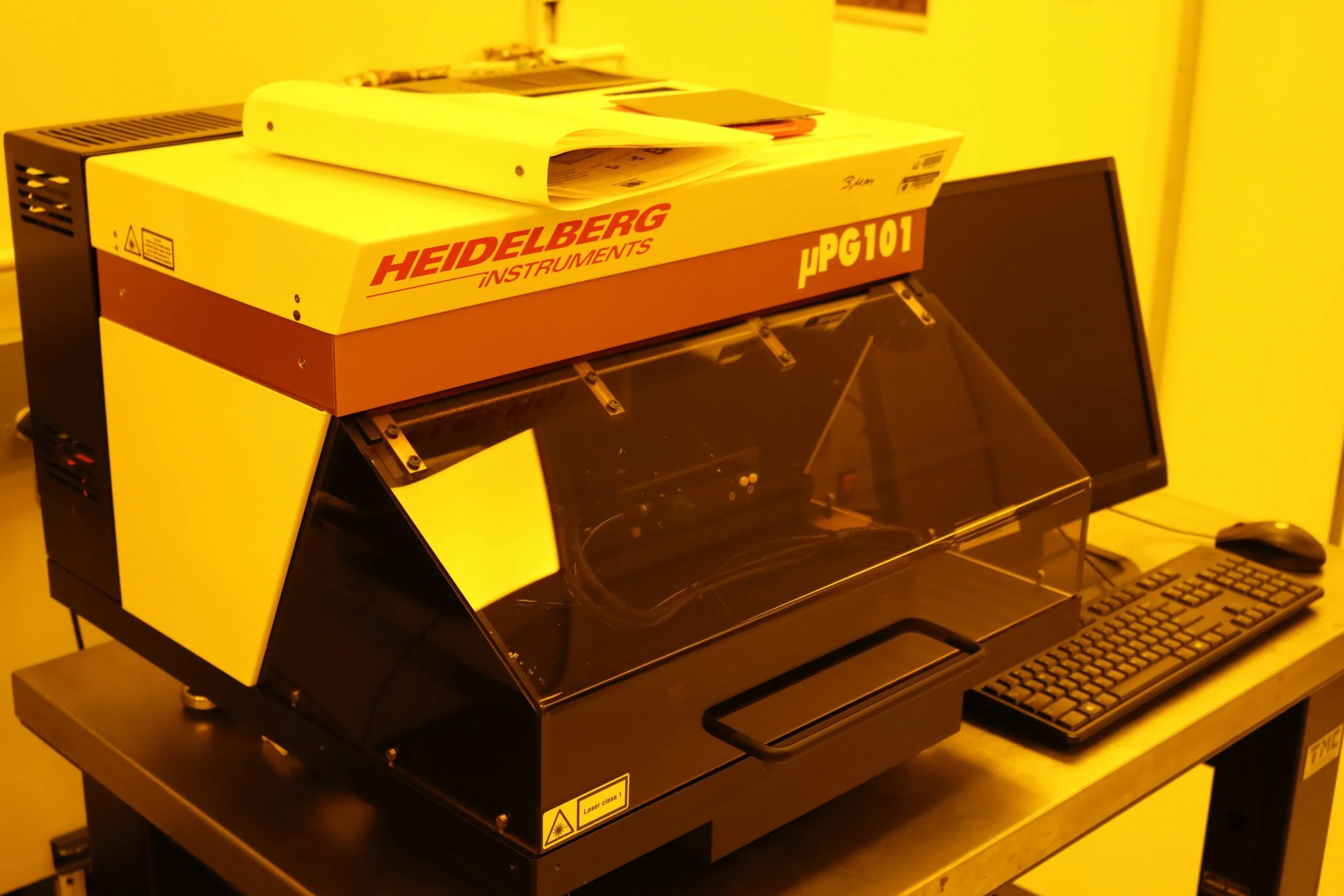HEIDELBERG µPG 101 LASER WRITER
HEIDELBERG WEBSITE | STANDARD OPERATING PROCEDURE | MORE INFORMATION
GENERAL INFORMATION
The μPG 101 is an easy-to-use micro pattern generator for direct writing applications and low volume mask making. The system can be used for applications like MEMS, BioMEMS, Integrated Optics, and Micro Fluidics.
KEY FEATURES AND OPTIONS
Substrates up to 100 x 100 mm2
Critical dimension resolution is 3 μm
Address grid down to 120 nm for the 3 μm.
Multiple data input formats (DXF, CIF, BMP)
Camera system for alignment
Lithography Materials and Processing Capabilities
The µPG laser wavelength is 405 nm. To use direct lithographic exposures, the photosensitive coating of the substrates has to be chosen according to the wavelength used and the intended application. Standard substrates for masks are chromium coated plates of float glass or quartz (depending on the requirements concerning temperature stability) with anti-reflection layer (e.g., chromium-oxide), or silicon wafers. Recommended photoresist coatings are:
Binary exposures (2D) on thin resists (~5000 Å):
S1805: A Shipley resist from the S1800 family that is spin-coated to 0.5 µm thickness
AZ1350, AZ1505: Clariant resists which are comparable to the S1805
3D resists structuring:
AZ4562: Thick resist ~6 µm (exact number depends on coating process)
AZ9260: Another Clariant resist with higher quality that can be coated with higher thickness.
CONTACT INFORMATION
For additional information about the Heidelberg µPG 101 Laser Writer, please contact the clean room staff at: cniCR@columbia.edu.

